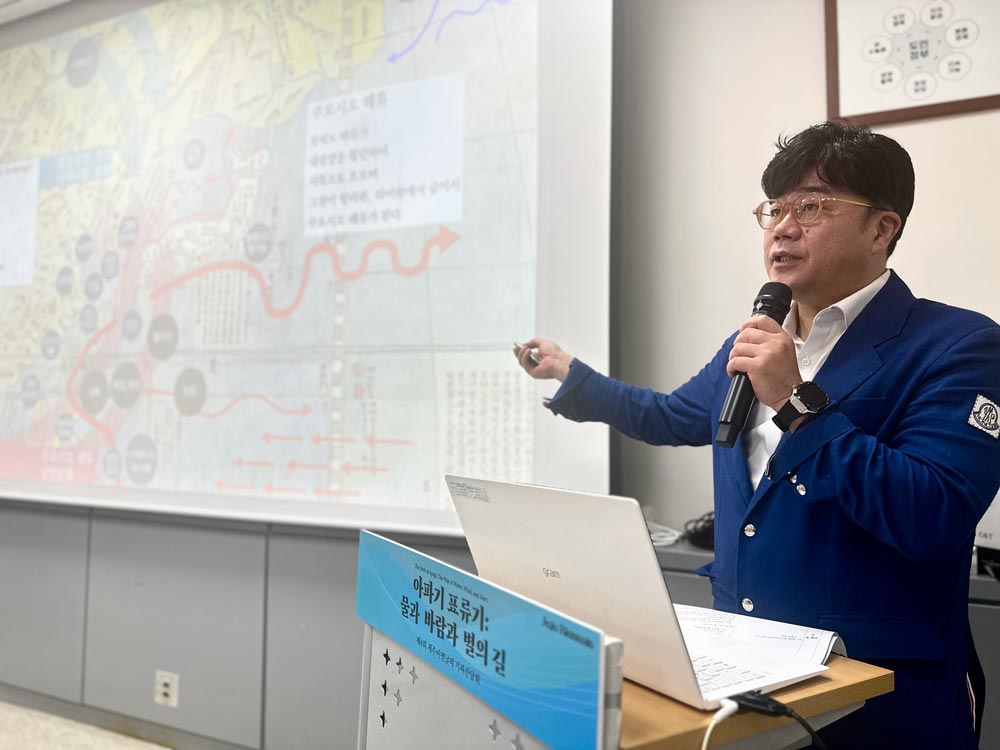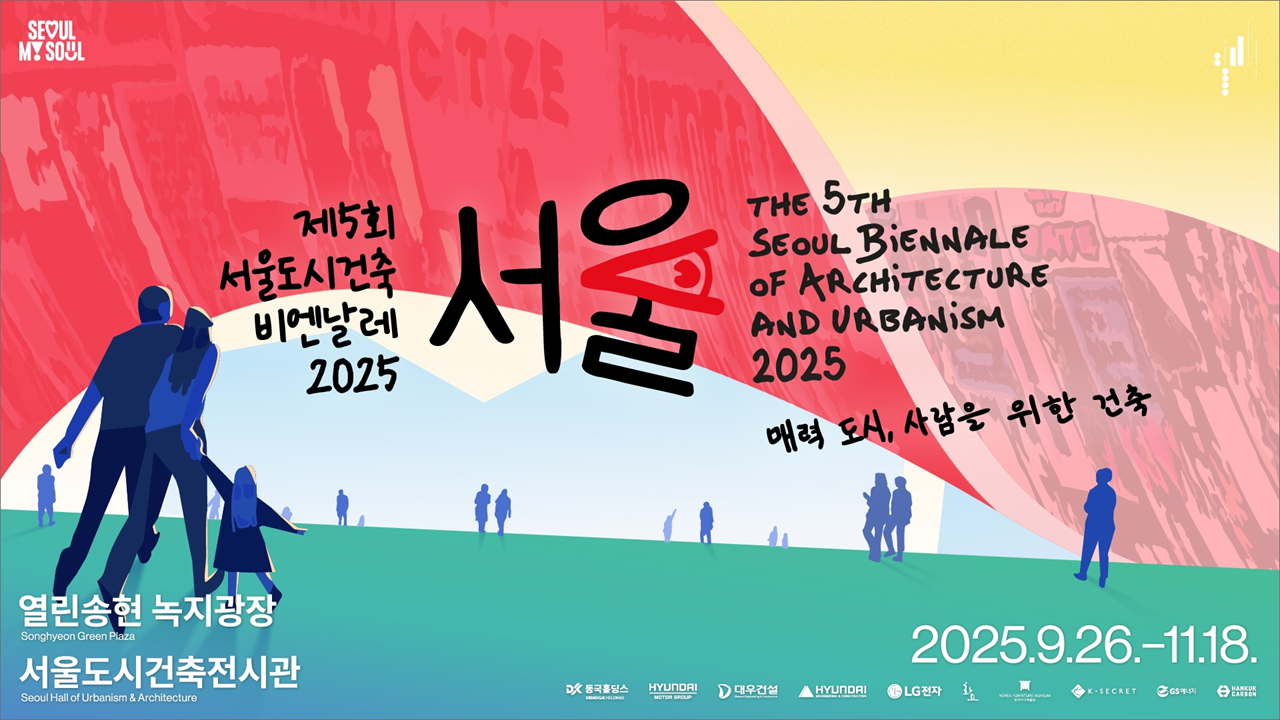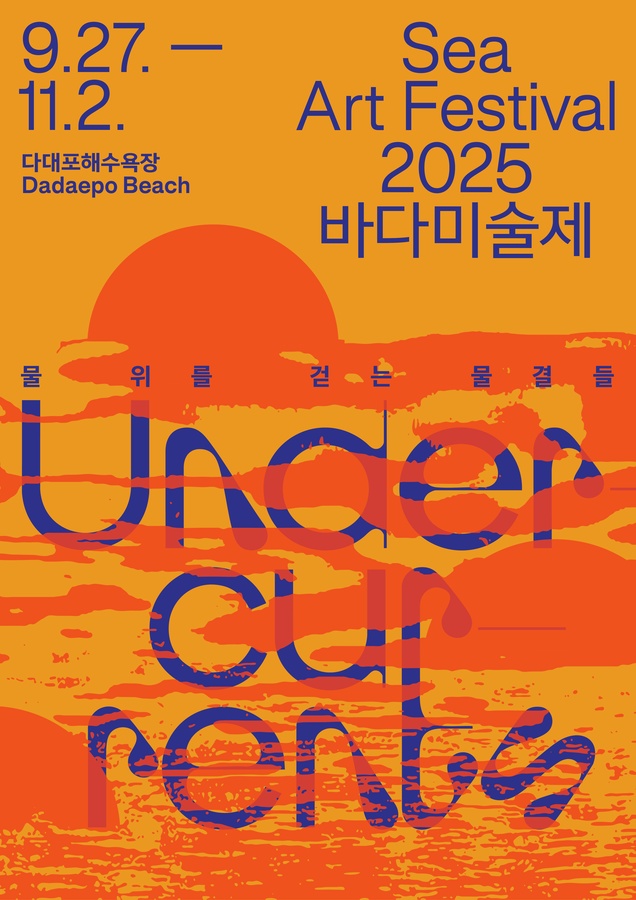 Title image of "Flowing Moon, Embracing Land," the 3rd Jeju Biennale, Jeju. (November 16, 2022 – February 12, 2023). © The Jeju Museum of Art.
Title image of "Flowing Moon, Embracing Land," the 3rd Jeju Biennale, Jeju. (November 16, 2022 – February 12, 2023). © The Jeju Museum of Art.As of today, more than ten biennales are being held in South Korea, and some say this number is too high compared to the size of the population who enjoys contemporary art in the country. Despite the surplus of biennials, the Jeju art community has been raising their voices for an international event dealing with contemporary art, as the island is separated from the Korean peninsula’s mainland, making it hard to come across diverse new art cultures.
Jeju Island’s unique environment and culture have attracted countless tourists yearly from mainland Korea and abroad. In September 2019, before the Covid-19 outbreak, the island received about 1,229,800 foreign tourists. Yet, the Jeju Museum of Art is the only institution specializing in art on the island, meaning that the region needs more places to experience art and interact with the international art world.
Lee Na-yeon, director of the Jeju Museum of Art, the hosting organization of the biennale, explained that the Jeju Biennale is a very important event for the local art community. Jeju artists greatly desire to hold a biennale in their own region, believing that an international event is essential for the balanced development of its own culture and arts and exposure to various others’.
After its first event in 2017, the second biennale was scheduled to be held in 2020. But internal conflict and the Covid-19 pandemic kept the event from being held. Consequently, the second Jeju Biennale was effectively canceled, having no physical location or displays but instead appearing in archived materials.
After experiencing such difficulties at the last event, concerns persisted about its next iteration, yet the third biennale was finally held on November 16.
Organized by the Jeju Museum of Art with a budget of about 1.8 billion KRW, this year’s biennale is scheduled to run until February 12, 2023. Artistic Director Park Nam-hee (b. 1970), appointed last March, gathered fifty-five artists and teams from sixteen countries to present a total of 165 works of various genres.
 Park Nam-hee, Artistic Director of the 3rd Jeju Biennale. Courtesy of the Jeju Museum of Art.
Park Nam-hee, Artistic Director of the 3rd Jeju Biennale. Courtesy of the Jeju Museum of Art.Director Park, who has worked as a curator and exhibition director at the Cheongju International Craft Biennale and as a general manager of the Asia Culture Center, explained that the third Jeju Biennale was developed based on an attempt to find artistic practices for global coexistence in the era of the ongoing climate crisis. Park also hopes this event serves as an opportunity for the art community to ask questions about how to move forward with an important art event on Jeju Island.
The title of this exhibition is Flowing Moon, Embracing Land. This title was chosen to deliver an artistic message on how to survive as part of the natural community. Symbolizing the circulation mechanism, the ‘flowing moon’ captures the properties of time and change in nature, while ‘embracing land’ can be understood as an act that implies lively but humble relationships among the members of nature.
Under this concept, the biennale sees nature, humans, myths, and the universe as equal objects and proposes an experience of fluttering encounters, communications, and coexistence. The sub-themes explore the world of mythical, historical, material, and cosmic natural resonance.
 김수자, , 2016, 장소특정적 필름 설치, 가변크기 국립현대미술관 현대차 시리즈 2016, 김수자 스튜디오 제공
김수자, , 2016, 장소특정적 필름 설치, 가변크기 국립현대미술관 현대차 시리즈 2016, 김수자 스튜디오 제공The biennale has six locations this year. The Jeju Museum of Art and the Jeju Museum of Contemporary Art are the main venues. The satellite venues include the International Peace Center Jeju, Samseonghyeol Shrine, Gapado AiR (Gapado Artist in Residence), and Next Door to the Museum Jeju.
At the Jeju Museum of Art, the works of thirty-three artists—from emerging to established artists, artists with various nationalities and different backgrounds, and Korean artists—are included in this venue. Internationally renowned Korean artists such as Kimsooja, and Moon Kyungwon & Jeon Joonho, as well as artists of Korean descent such as Anicka Yi and, Gala Porras-Kim, and many other artists, are presented in this venue.
 김수자, , 2016, 장소특정적 필름 설치, 가변크기 국립현대미술관 현대차 시리즈 2016, 김수자 스튜디오 제공
김수자, , 2016, 장소특정적 필름 설치, 가변크기 국립현대미술관 현대차 시리즈 2016, 김수자 스튜디오 제공At the Jeju Museum of Contemporary Art, works by twelve Korean and international artists are presented, including Kang Yiyun, who works on media art; Yun Suknam, who touches on subjects of women, ecology, and history; and Quayola, who works on multimedia art that depicts nature through the eyes of a machine.
Other artists in the exhibition include Jeju-born artist Kang Yo Bae and Korean artists Kim Kira, Yoon Hyangro, and Lee Soyo. Artists of Korean descent, such as Jane Jin Kaisen and Florian Bong-Kil Grosse, are also included, as well as artists of various nationalities, such as Rirkrit Tiravanija, who touches on the subject of community through his performance works, Kenyan artist Wangechi Mutu, and British artist and filmmaker John Akomfrah, who played a central role in the black arts movement in the 1980s, among many others.

























